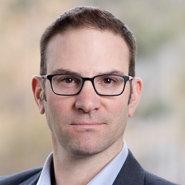FERC Proposes the First Comprehensive Reform of its PURPA Regulations Since 1980: Renewables Under the Gun?
On September 19, 2019, the Federal Energy Regulatory Commission (FERC) issued a Notice of Proposed Rulemaking (NOPR) proposing to comprehensively rewrite its rules for implementing the Public Utility Regulatory Policies Act of 1978 (PURPA). If ultimately adopted, the NOPR would substantially alter FERC’s PURPA implementation rules, with potentially far-reaching impacts on renewable energy development across the country. Comments responding to the NOPR are due sixty days from its publication in the Federal Register. Publication should occur in the next few days, making comments due in late November or early December 2019. Although there is no particular deadline, it is reasonable to expect FERC will issue a final rule sometime next year that incorporates some or all of the changes proposed in the NOPR, with rehearing orders and litigation likely to follow.
Background
Enacted in 1978 in response to the recurring energy crises of that decade, PURPA aimed to increase the production of power by small renewable generation and cogeneration projects (termed Qualifying Facilities or QFs). To overcome the reluctance of traditional utility monopolies to permit their competitors to access electricity markets, Section 210 of PURPA imposes a mandatory purchase obligation on regulated utilities, requiring them to purchase power from QFs at “avoided cost” rates. This requirement is generally referred to as PURPA’s “must-take” provision. Under PURPA’s “cooperative federalism” model, the primary responsibility for implementing PURPA falls on the state utility commissions and on the elected boards and commissions that govern the nation’s publicly-owned utilities, but FERC is charged with establishing the rules the states and public power entities must follow in implementing PURPA.
FERC’s PURPA implementation rules were adopted in 1980 in Orders No. 69 and No. 70. While those rules have remained largely unchanged, extensive regulatory proceedings and litigation in the intervening years before FERC, the state utility regulators, and in state and federal courts have together helped define the contours of PURPA’s must-purchase obligation. Several key concepts have emerged from the rules and ensuing legal processes, which can be summarized in the following general description of the must-purchase obligation: utilities (including both regulated investor-owned utilities and unregulated publicly-owned utilities) are required to purchase the entire electrical output made available by any QF at “avoided cost” rates.
The starting point for facilities seeking to invoke PURPA is to obtain QF status. FERC certifies all QFs, which include renewable energy generation with less than 80 megawatts (MW) of capacity and cogeneration facilities of any size. In most cases, QFs self-certify and any challenges to QF status must be brought at FERC by seeking a declaratory order that the QF should not be certified. To determine whether a renewable generator meets the 80 MW threshold, FERC adopted the “one-mile rule,” which counts individual generators such as wind turbines as part of the same site if they are located within one mile of each other, use the same energy resource, and are owned by the same entity or affiliates. With the rapid rise of wind power in the last two decades, the one-mile rule has become controversial, with utilities frequently charging that developers abuse the rule by separating a large wind farm into smaller units in order to meet the 80 MW QF threshold. Considerable controversy has also arisen over the question of whether cogeneration facilities are meeting statutory and regulatory efficiency requirements that are intended to ensure that the cogenerator is actually capturing waste heat from an industrial process.
Once a QF is certified, the mandatory purchase obligation arises when a QF enters into a “legally enforceable obligation” (LEO) to deliver power to a utility. Although defining exactly what constitutes a LEO has been the subject of considerable controversy, generally, it is a binding commitment on the part of the QF to deliver power to the purchasing utility. The purchase obligation is triggered by a LEO, rather than a binding contract, to prevent utilities from delaying the purchase obligation through protracted negotiations that might occur if a mutually-agreed and binding contract were required.
Defining avoided cost rates has also spawned volumes of PURPA litigation. While FERC has generally left the specifics of determining avoided costs to the states, its rules lay out a number of principles for determining avoided costs, which are generally the costs the utility would incur to obtain power if it did not buy power from the QF. FERC’s current PURPA rules require that QFs be given the choice of entering into a long-term contract with prices fixed at the time the QF enters into a LEO, or an “as-delivered” contract, where the QF is paid the prevailing price for energy at the time it delivers energy to the utility. Most QFs have been constructed using long-term contracts, which are generally necessary to obtain financing. As-delivered contracts are largely limited to cogeneration facilities that can be financed based on the industrial processes supported by the cogenerator, where excess energy sales can be treated as additional revenue not necessary for financing.
PURPA Section 210 remained unchanged for thirty-five years until the Energy Policy Act of 2005 was enacted. That legislation contained two major amendments to Section 210. First, a new Section 201(m) permitted FERC to waive the utility’s must-purchase obligations if the Commission determined that the QFs had access to organized wholesale markets (that is, markets operated by Regional Transmission Organizations (RTO) or Independent System Operators (ISO)), or a utility could demonstrate that the QF has non-discriminatory access to a wholesale market hub where it can sell its output. Second, the legislation imposed new efficiency requirements cogenerators are required to meet in order to be certified as QFs.
In Order No. 688, FERC concluded that generators with capacities greater than 20 MW operating in the organized markets have non-discriminatory access to those markets and can sell their output at wholesale prices set by those markets. But, FERC concluded, QFs smaller than 20 MW continued to face significant barriers to market access because of their size and the complication of participating in these markets. FERC, therefore, declined to waive the must-purchase obligation for these smaller QFs. As a result, utilities operating in the organized markets of the East and Midwest no longer were required to purchase output from QFs greater than 20 MW, but the mandatory purchase obligation remains for QFs below this threshold. The mandatory purchase obligation remained in effect for utilities operating outside the organized markets, primarily in the West and Southeast.
PURPA is generally considered to be the first breach in the wall of the traditional model of utility regulation, where consumers are served by vertically-integrated monopolies operating in certificated service territories subject to comprehensive rate regulation. As PURPA was implemented, competition became a force in the wholesale generation markets and independent, non-utility generators gained a foothold in the industry, at least in states with robust PURPA programs. PURPA’s success laid the groundwork for further reforms of the regulatory model, particularly FERC’s open access transmission regime, which was intended to foster a competitive wholesale generation market by permitting all generators to have open and non-discriminatory access to the nation’s electric transmission system so that they can be connected with electric consumers on equal footing with incumbent utilities.
FERC’s NOPR suggests that PURPA may become a victim of its own success. Based on dramatic changes that have occurred in the industry since PURPA was passed in 1978, many of them related to a regulatory paradigm shift toward competition in the wholesale generation markets engendered by PURPA, the NOPR suggests that significant changes in FERC’s PURPA implementation regulations are now needed to “modernize” those regulations.
The FERC NOPR
Changes in the Industry
The NOPR asserts that the rapid evolution of the electric industry in the last four decades requires its FERC rules to be updated. Multiple developments are cited by FERC, including the shale gas revolution, which has driven down the price and substantially increased the supply of natural gas in North America, resulting in steady downward pressure on prices for gas-fired electric generation. Similarly, the rapid rise of renewable generation, especially wind and solar power, and steep declines in the price of developing these resources have placed downward pressure on wholesale electricity prices. In addition, market innovations spawned by FERC’s open access transmission regime, including robust wholesale markets in both the organized markets and in other regions, allow QFs to access these markets on terms that were not contemplated when PURPA was first enacted.
Likewise, the NOPR asserts, policies favoring the development of renewable generation, such as state-level renewable portfolio standards and tax incentives, have driven the rapid growth of renewable generation. These changes, the NOPR argues, justify substantial changes in FERC’s PURPA implementation regulations. Changes in six major areas are proposed.
Determining Avoided Cost Rates
FERC proposes to abandon its long-standing rule that QFs must be offered a long-term fixed-price contract. This rule, the NOPR argues, has resulted in many long-term QF contracts that are substantially above prevailing market prices, largely because wholesale prices have been declining over the long term.
Instead, FERC proposes a new construct for determining avoided cost rates in which the energy rates paid to the QF could vary over the term of the contract, although utilities would have to offer a fixed price for the QF’s capacity. FERC suggests a number of benchmarks for setting avoided energy costs, including the locational marginal prices (LMP) used in the organized markets to set short-term energy prices at market nodes, the prices for energy from gas-fired turbines (which varies depending on the price of natural gas and the efficiency of the marginal generator), and using competitive solicitations as a basis for setting the avoided cost price. The NOPR also proposes that avoided cost rates could be set by reference to energy prices forecasted at the time of contracting based on forward price curves in electricity and natural gas markets.
As with the current rules, states would be primarily responsible for calculating avoided cost rates. FERC’s proposal, if adopted, would permit but not require states to use variable energy pricing based on LMP and other short-term markets rather than setting long-term energy prices at the outset.
PURPA and Retail Choice
The NOPR proposes to reduce utility must-purchase obligations to the extent the utility’s obligations to supply power to consumers has been reduced under a state retail choice policy. In states where retail competition is permitted, utility obligations to supply power to retail consumers have been reduced, often limited only to the role of “provider of last resort,” and consumers can choose alternative providers to supply their power. FERC reasons that, to the extent that a utility’s obligations to supply retail customers has been reduced, the obligation to purchase from QFs should be reduced concomitantly.
Modifying the One-Mile Rule
FERC also proposes significant modifications to the one-mile rule. Under the NOPR’s proposal, generators located within one mile and under one owner would be considered a single facility, while generators separated by more than one mile would still presumptively be considered separate facilities. However, this would become a rebuttable presumption where the generators are between one and ten miles apart. In that circumstance, any interested party could launch a challenge at FERC arguing that the generators are, despite their physical separation, part of a single generator site based on physical or ownership factors. The NOPR would also permit the QF to submit additional evidence at the self-certification stage to preemptively demonstrate that it is a separate generator.
FERC also proposes refinements to the rule aimed at clearly defining what constitutes a generator and more precisely determining how the separation between generators is calculated. These refinements include a specific definition of “electric generating equipment” and new requirements that QFs provide specific GPS coordinates for the location of their generators.
Reducing the Must-Purchase Obligation Threshold to 1 MW
Asserting that the wholesale markets in the RTO/ISO regions have matured so that smaller generators can effectively compete, FERC proposes to reduce the 20 MW threshold adopted in Order No. 688 to 1 MW. This would relieve utilities operating in the organized markets of the obligation to purchase from all but the smallest QFs. The proposal would, however, retain the existing threshold for cogeneration facilities.
Of particular interest for the West, the NOPR also seeks comments on how FERC implements Section 201(m)(1)(C), which allows utilities operating outside the organized markets to avoid the mandatory purchase obligation if they can demonstrate that QFs operating in their territories have non-discriminatory access to competitive wholesale market hubs. Although FERC does not propose specific factors that would be considered in making a determination under Section 210(m)(1)(C), it seeks comments on whether such factors should be added to its regulations and, if so, what those factors should be.
Defining “Legally Enforceable Obligation”
The NOPR indicates that FERC will continue to enforce LEOs as a concept and, in fact, cites a number of recent precedents on the issue, stating that it does not intend to abandon these precedents. Nonetheless, the NOPR requests comments on proposed refinements to the LEO concept that would require the QF to demonstrate that its project is commercially viable and has a financial commitment to construct the project based on “objective, reasonable, state-determined criteria.” It is unclear how commercial viability and financial commitment could be demonstrated prior to the formation of the LEO since a LEO or power purchase agreement is generally necessary to obtain project financing.
QF Certification Reforms
Under existing FERC procedural rules, a party challenging a QF’s self-certification must file a petition for declaratory order, which requires the party to pay a filing fee of $28,990. The NOPR proposes to alter the procedural rules so that a party can file a protest of QF self-certification without having to file a petition for declaratory order and pay the associated filing fee. The NOPR would require the protester to identify specific facts calling the QF’s self-certified status into question and the Commission would generally rule on the protest within 90 days.
The NOPR, the Continuing Importance of PURPA, and the Potential Impact of FERC's Actions
Even if adopted in final form, the NOPR is unlikely to quell the controversy around PURPA, as the dissenting statement issued by FERC Commissioner Richard Glick suggests. He asserts that the NOPR would “effectively gut” PURPA, that the case for reform laid out in the NOPR “rings hollow,” and that the proposed avoided cost reforms will “make it more difficult – in some cases impossible – for QFs to obtain financing.” It is, therefore, reasonable to expect that, if adopted in final form, the NOPR will be subject to a lengthy challenge in the federal courts. In addition, because states remain in the driver’s seat for implementing PURPA, a great deal of future action can be anticipated before state regulatory commissions and the governing boards of publicly-owned utilities in determining whether and to what extent to adopt the FERC-recommended approaches. In light of recent developments, it seems likely that some states, like Washington, which has recently taken steps to revivify PURPA in the state, are unlikely to step back from their approach even if the FERC adopts the NOPR proposals. On the other hand, PURPA remains the primary vehicle encouraging renewable energy development in the many states that lack a renewable portfolio standard or other strong pro-renewables policies, and, if Commissioner Glick’s statement is correct, adoption of the NOPR could hamper renewables development, particularly in those states.
Beveridge & Diamond's Renewable Energy industry group supports and enables successful and sustainable renewable energy projects, helping clients overcome a number of environmental regulatory and transactional hurdles. We help developers, energy companies, manufacturers, and other participants with issues such as construction and land use impacts, endangered species, stormwater management, hazardous materials, and waste. For more information, please contact the authors.











